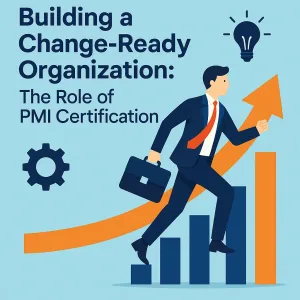Introduction to Glide Path Project Management
The concept of a glide path serves as a crucial framework for guiding projects toward successful completion. Glide path project management refers to a structured approach that outlines the trajectory of a project, detailing the necessary steps and milestones required to achieve specific goals. This method is akin to an airplane following a predetermined path to ensure a safe landing, emphasizing the importance of adhering to a defined course throughout the project lifecycle.
Characteristics of Glide Path Project Management
- Predefined Trajectory: Glide path project management is characterized by its clear definition of the project’s trajectory, which includes specific milestones and deliverables that must be met at various stages of the project [1].
- Flexibility and Adaptability: The Glidepath Project Method promotes a flexible and adaptable approach to managing projects, allowing project managers to respond effectively to changes and unforeseen challenges [11].
- Focus on Milestones: Key components of glide path management include identifying significant milestones that mark critical outcomes or deliverables, ensuring that the project remains on track to meet its final objectives [14].
Significance of Glide Paths in Project Timelines and Milestones
The glide path is integral to project timelines as it provides a roadmap for progress, helping teams to monitor their advancement against established benchmarks. By setting clear milestones, project managers can assess whether the project is on schedule and make necessary adjustments to keep it aligned with its goals. This structured approach not only enhances accountability but also facilitates communication among team members, stakeholders, and clients regarding the project’s status and any required changes [14].
The Role of Change Management in Glide Path Projects
Change management is a critical aspect of glide path project management, as it ensures that any modifications to the project plan are effectively managed and communicated. The importance of change management in glide path projects can be summarized as follows:
- Alignment with Strategic Goals: Effective change management helps ensure that the project aligns with the organization’s strategic objectives, increasing the likelihood of achieving desired outcomes [12].
- Proactive Planning: Managers must identify the necessary changes and proactively plan for their implementation, which is essential for navigating the complexities of project execution [6].
- Maintaining Momentum: A robust change management process is vital for maintaining momentum throughout the project, particularly when adjustments are needed to lock in improvement gains [10].
Understanding Change Management in Glide Path Projects
Within the framework of Glide Path Project Management, effective change management is crucial for navigating the complexities that arise during project execution. This section delves into the unique challenges and dynamics of managing change in glide path projects, offering insights and best practices for change managers and project managers alike.
Common Areas of Change in Glide Path Projects
Glide path projects often encounter several common areas of change, including:
- Scope Adjustments: As projects progress, the initial scope may need to be revised due to evolving stakeholder needs or unforeseen circumstances. This can lead to significant changes in project deliverables and objectives [10].
- Resource Allocation: Changes in resource availability, whether due to budget constraints or personnel shifts, can impact project execution. Effective management of these changes is essential to maintain project momentum [14].
- Timeline Modifications: Delays or accelerations in project phases can occur, necessitating adjustments to the overall timeline. Understanding how to adapt to these changes is vital for project success [11].
Impact of Changes on Project Timelines, Budgets, and Resources
Changes within glide path projects can have profound implications on various project aspects:
- Timelines: Adjustments to project scope or resources often lead to shifts in timelines. Delays can result from the need for additional approvals or reallocation of tasks, which can hinder the timely completion of deliverables [11].
- Budgets: Changes can also affect the financial aspects of a project. For instance, if additional resources are required to accommodate a change in scope, this can lead to budget overruns. Regularly reviewing budget estimates against actual expenditures is crucial to mitigate financial risks [9].
- Resource Management: The need for additional training or hiring of new personnel to adapt to changes can strain existing resources. Ensuring that team members are equipped with the necessary skills and tools to handle changes is essential for maintaining productivity [8].
Importance of Stakeholder Engagement During Changes
Engaging stakeholders effectively during periods of change is paramount for the success of glide path projects:
- Communication: Continuous communication with stakeholders helps to manage expectations and reduce resistance to change. Keeping stakeholders informed about the reasons for changes and their potential impacts fosters a collaborative environment [4].
- Active Sponsorship: Having active support from project sponsors can facilitate smoother transitions during changes. Their involvement can help in addressing concerns and securing necessary resources [5].
- Tailored Training: Providing targeted training sessions for stakeholders affected by changes ensures that they are prepared to adapt. This not only enhances their confidence but also minimizes disruptions to project workflows [4][8].
Best Practices for Managing Change in Glide Path Projects
Managing change effectively is crucial in glide path project management, where the focus is on maintaining a clear trajectory towards project goals while adapting to evolving circumstances. Here are some best practices that can help change managers and project managers navigate this complex landscape:
- Establish a Clear Change Management Plan Early: Initiating a comprehensive change management plan at the outset of the project is essential. This plan should outline the processes for identifying, assessing, and implementing changes throughout the project lifecycle. By doing so, teams can proactively address potential disruptions and align changes with the project’s objectives, ensuring a smoother transition and minimizing resistance from stakeholders [11][15].
- Utilize Effective Communication Strategies: Communication is a cornerstone of successful change management. Keeping stakeholders informed and engaged through regular updates, meetings, and feedback sessions fosters a culture of transparency. This approach not only builds trust but also encourages collaboration among team members, which is vital for navigating changes effectively [2][8]. Tailoring communication to different audiences ensures that everyone understands the implications of changes and their roles in the process.
- Implement a Change Control Process: A systematic change control process is critical for assessing and documenting changes. This process should include steps for evaluating the impact of proposed changes on project timelines, budgets, and resources. By maintaining thorough documentation, project managers can track changes, justify decisions, and ensure that all stakeholders are on the same page regarding project adjustments [10][14]. This structured approach helps mitigate risks associated with unplanned changes.
- Encourage Flexibility and Adaptability: In glide path project management, the ability to adapt to new information and changing circumstances is paramount. Project teams should be encouraged to embrace flexibility, allowing them to pivot when necessary without losing sight of the project’s overall goals. This adaptability can be fostered through training, team-building exercises, and a culture that values innovation and problem-solving [11][12]. By promoting a mindset that welcomes change, teams can respond more effectively to challenges and seize new opportunities as they arise.
By implementing these best practices, change managers and project managers can enhance their ability to manage change within glide path projects, ultimately leading to more successful outcomes and a higher return on investment.
Tools and Techniques for Effective Change Management
Effectively managing change is crucial for ensuring project success. This section outlines practical tools and techniques that can aid change managers and project managers in navigating the complexities of change within glide path projects.
1. Project Management Software and Tools
Utilizing project management software is essential for facilitating change tracking throughout the project lifecycle. These tools offer several benefits:
- Centralized Information: Project management platforms provide a centralized system for managing all project-related information, making it easier to track changes and updates in real-time. This ensures that all team members are on the same page and can access the latest information as needed [15].
- Task Management: These tools allow for the assignment and monitoring of tasks related to change management, ensuring accountability and clarity in responsibilities. This structured approach helps in minimizing disruptions during the change process [8].
- Reporting and Analytics: Many project management tools come equipped with reporting features that enable project managers to analyze the impact of changes and make data-driven decisions. This can be particularly useful in assessing the effectiveness of change initiatives [15].
2. Risk Assessment Frameworks
Risk assessment frameworks play a pivotal role in identifying potential changes that may arise during a project. By systematically evaluating risks, project managers can:
- Anticipate Changes: A thorough risk assessment helps in recognizing areas where changes are likely to occur, allowing for proactive planning and mitigation strategies [12].
- Prioritize Risks: By categorizing risks based on their potential impact and likelihood, managers can prioritize which changes need immediate attention and resources, ensuring that critical issues are addressed promptly [12].
- Develop Contingency Plans: Understanding the risks associated with a project enables the development of contingency plans that can be activated if changes occur, thereby reducing the likelihood of project delays or failures [12].
3. Stakeholder Mapping and Impact Analysis
Effective change management also hinges on understanding the stakeholders involved in a project. Techniques such as stakeholder mapping and impact analysis are invaluable:
- Stakeholder Mapping: This technique involves identifying all stakeholders affected by the project and categorizing them based on their influence and interest levels. By understanding who the key stakeholders are, project managers can tailor their communication and engagement strategies to ensure buy-in and support for changes [4].
- Impact Analysis: Conducting an impact analysis helps in assessing how proposed changes will affect various aspects of the project and its stakeholders. This analysis provides insights into potential resistance points and areas that may require additional support or training, thereby facilitating smoother transitions [8][11].
Case Studies: Successful Change Management in Glide Path Projects
In glide path projects, effective change management is crucial for ensuring that projects remain on track and achieve their intended outcomes. Below are several case studies that illustrate successful change management strategies employed across various industries, highlighting the lessons learned and best practices that can be applied to future projects.
1. Healthcare System Transformation
A hospital system implemented a glide path project to enhance patient care through the integration of new technology. The change management strategy involved:
- Stakeholder Engagement: The project team conducted workshops with healthcare professionals to gather input and address concerns, ensuring that the changes were aligned with their needs.
- Training Programs: Comprehensive training sessions were organized to familiarize staff with the new systems, which helped mitigate resistance to change.
Lessons Learned:
- Engaging stakeholders early in the process fosters buy-in and reduces resistance.
- Continuous training and support are essential for successful technology adoption in healthcare settings [10].
2. Financial Sector Overhaul
A major financial institution undertook a glide path project to streamline operations and improve customer service. The change management approach included:
- Clear Communication: Regular updates were provided to all employees about the project’s progress and its impact on their roles.
- Feedback Mechanisms: The organization established channels for employees to voice their concerns and suggestions, which were taken into account during the implementation phase.
Best Practices:
- Maintaining transparency throughout the project helps build trust and encourages employee participation.
- Implementing feedback mechanisms allows for real-time adjustments to the change management strategy [10].
3. Manufacturing Process Improvement
A manufacturing company initiated a glide path project aimed at enhancing production efficiency. The change management strategies involved:
- Pilot Programs: Before full-scale implementation, pilot programs were conducted to test new processes and gather data on their effectiveness.
- Cross-Functional Teams: Teams from different departments collaborated to ensure that all aspects of the change were considered and integrated.
Key Takeaways:
- Testing changes on a smaller scale can identify potential issues before wider implementation.
- Collaboration across departments ensures a holistic approach to change management, addressing various perspectives and needs [10].
4. Technology Implementation in Education
An educational institution launched a glide path project to integrate digital learning tools. The change management strategy focused on:
- Vision Articulation: Leaders clearly articulated the vision for the project, emphasizing the benefits of digital tools for both educators and students.
- Ongoing Support: Continuous support was provided through mentorship programs for teachers, helping them adapt to the new technologyInsights:
- A compelling vision can motivate stakeholders to embrace change.
- Providing ongoing support and mentorship is critical for successful adaptation to new technologies in educational settings [10].
Common Pitfalls in Change Management for Glide Path Projects
Effective change management is crucial for ensuring successful outcomes. However, several common pitfalls can hinder this process, leading to project delays, increased costs, and stakeholder dissatisfaction. Below are key mistakes to avoid, along with their implications.
1. Lack of Communication
One of the most significant errors in change management is the failure to establish clear lines of communication. When communication is insufficient, it can lead to:
- Misunderstandings: Team members may not fully grasp the changes being implemented, resulting in confusion and errors in execution.
- Resistance to Change: Without proper communication, employees may feel uncertain about the changes, leading to resistance and a lack of buy-in from the team [1].
- Delayed Responses: Issues may go unaddressed if stakeholders are not informed about changes or potential problems, which can exacerbate challenges and lead to project setbacks [7].
2. Inadequate Stakeholder Involvement
Engaging stakeholders throughout the change process is vital. Neglecting this aspect can have serious repercussions:
- Lack of Support: If stakeholders are not involved in the decision-making process, they may not support the changes, which can undermine the project’s success [12].
- Missed Insights: Stakeholders often possess valuable insights that can enhance the change process. Failing to involve them can result in missed opportunities for improvement and innovation [10].
- Increased Resistance: When stakeholders feel excluded, they may resist changes, leading to a lack of cooperation and collaboration among team members [11].
3. Failing to Document Changes Properly
Proper documentation is essential for tracking changes and ensuring that all team members are aligned. Neglecting this can lead to:
- Confusion and Errors: Without clear documentation, team members may not be aware of the specific changes that have been made, leading to inconsistencies in project execution [6].
- Difficulty in Tracking Progress: Inadequate documentation makes it challenging to assess the impact of changes and measure progress, which can hinder effective project management [9].
- Loss of Accountability: When changes are not documented, it becomes difficult to hold individuals accountable for their roles in the project, potentially leading to a lack of ownership and responsibility [8].
By recognizing and addressing these common pitfalls, change managers and project managers can enhance their glide path project management strategies, ensuring smoother transitions and more successful outcomes. Implementing best practices in communication, stakeholder engagement, and documentation will not only mitigate risks but also foster a culture that embraces change effectively.
Conclusion: Embracing Change in Glide Path Projects
Particularly within the framework of Glide Path Project Management, the ability to navigate change effectively is paramount. As we conclude our exploration of best practices for managing change in these projects, it is essential to reiterate the significance of a structured approach to change management. This structured methodology not only facilitates smoother transitions but also aligns project objectives with organizational goals, thereby enhancing the likelihood of successful outcomes [12].
Moreover, the dynamic nature of project environments necessitates a commitment to continuous learning and adaptation. Change managers and project managers must remain vigilant and responsive to emerging challenges and opportunities. By fostering a culture of adaptability, teams can better manage the complexities associated with project changes, ensuring that they are not merely reactive but proactive in their approach [14]. This adaptability is crucial in maintaining momentum and achieving the desired project milestones, as outlined in the glide path [11].
Embracing change is not just a necessity; it is an opportunity for growth and innovation in project management. Let us continue to learn from one another and navigate the complexities of change together.
Find out more about Shaun Stoltz https://www.shaunstoltz.com/about/.
This post was written by an AI and reviewed/edited by a human.



